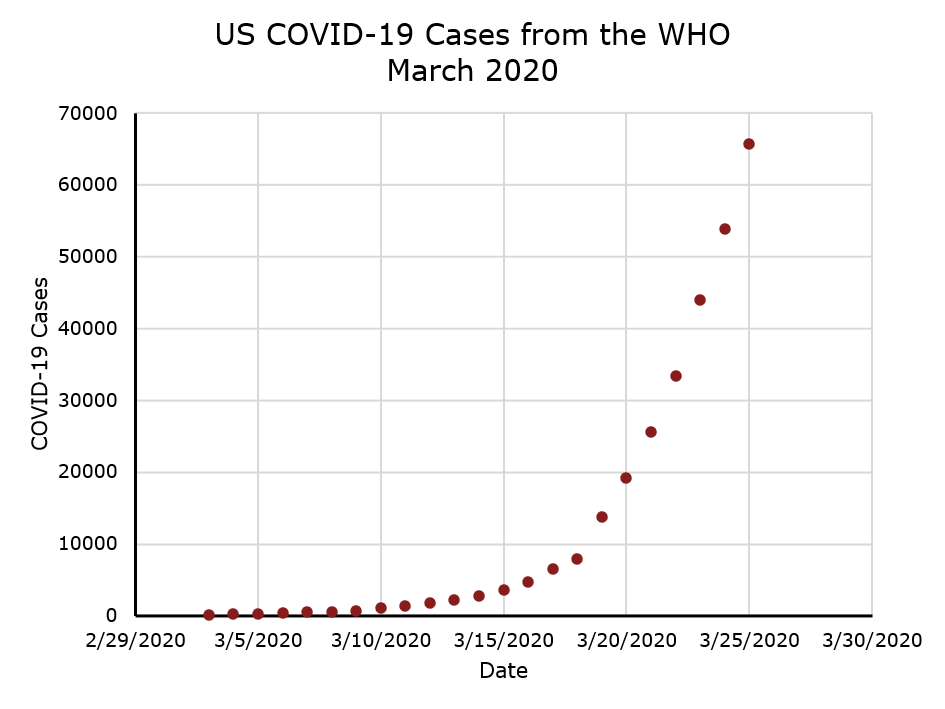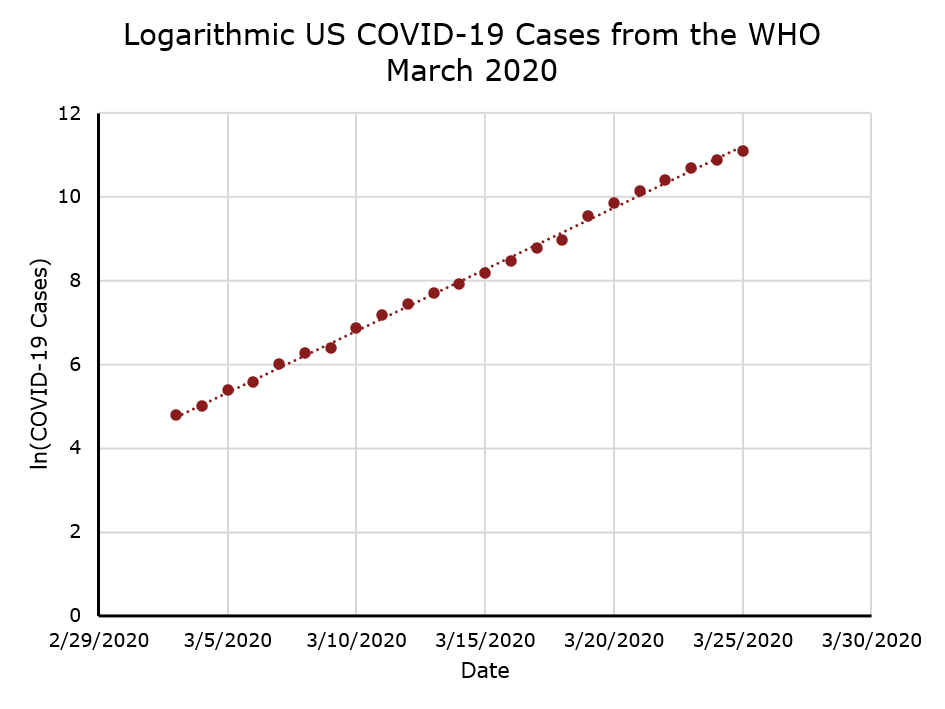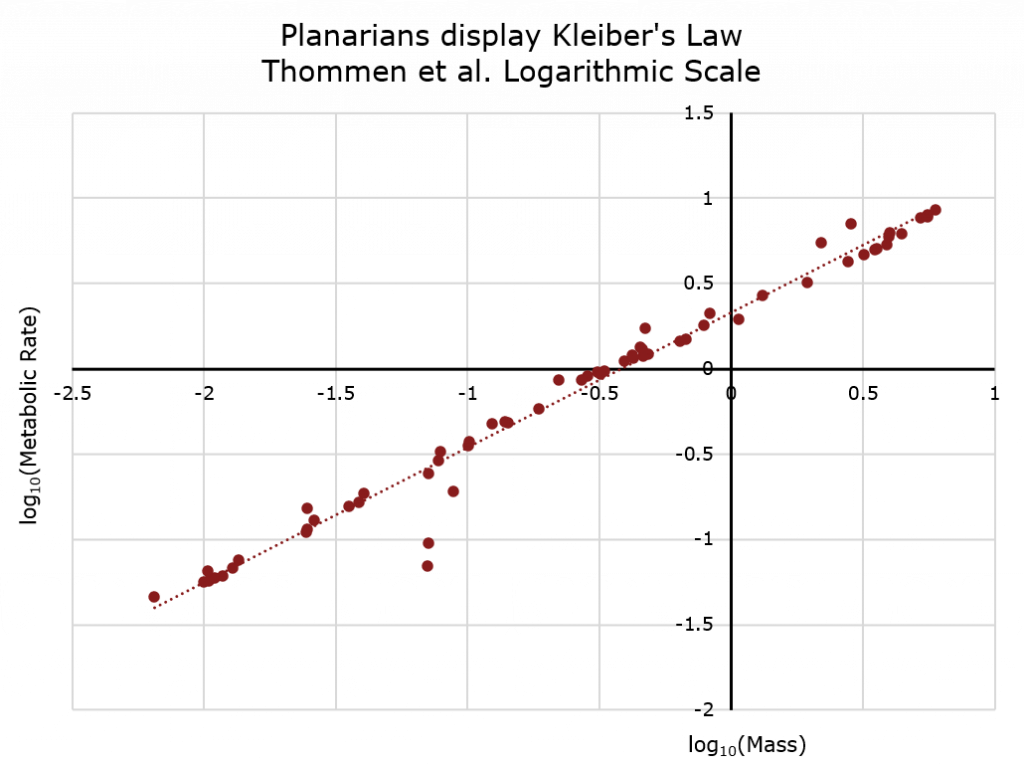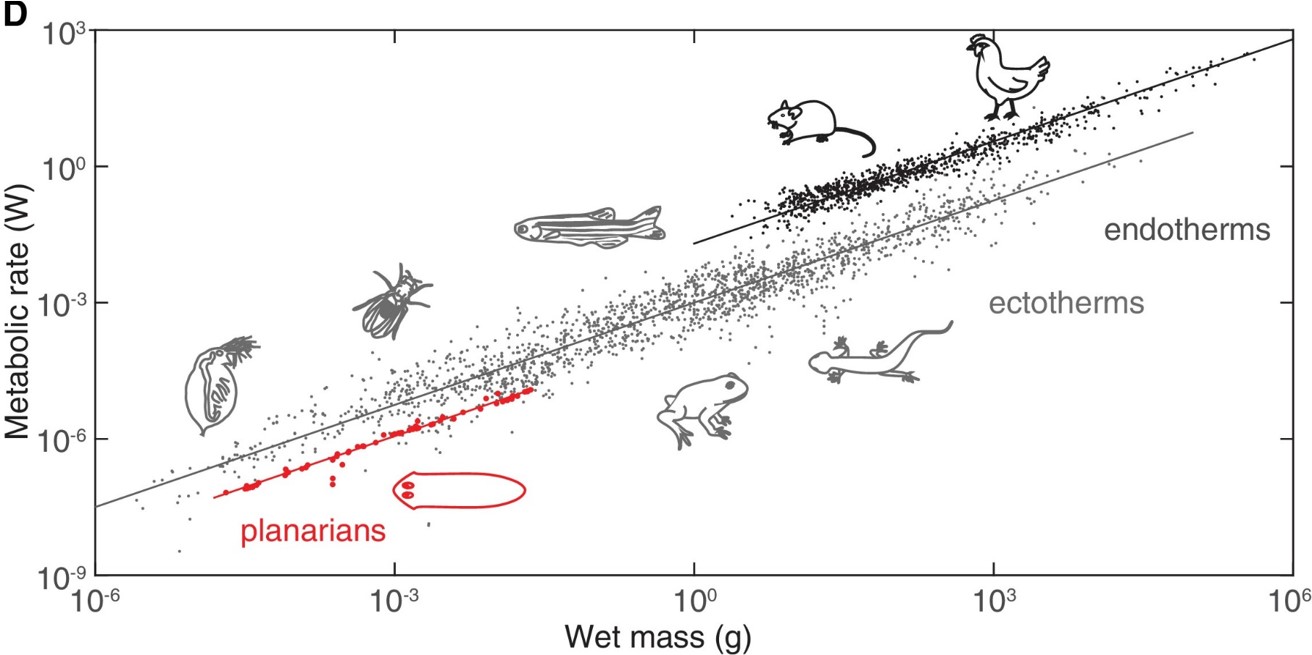Introduction to Linearizing with Logarithms
Brokk Toggerson
Introduction
In a previous lab, you used algebra to linearize data: you just moved variables around to make something that wasn’t a line look like a line so that you could fit it. While this is a common way of linearizing data, a far more common approach is to use logarithms. Logarithms can also be used to linearize data and are seen throughout the literature in the form of log-lin plots, where instead of plotting y vs. x, one plots the logarithm of y vs x, and log-log plots, where the logarithm of y is plotted against the logarithm of x.
Log-Lin Plots
For example, when I plot the number of COVID-19 cases in the US in March 2020 according to the WHO, the result is an exponential looking curve.

However, if I plot the natural logarithm (ln) of the number of cases on the vertical axis instead, the result is a straight line, and we know how to fit those!

Log-Log Plots
Another example is so-called Kleiber’s Law which is an empirical relationship between metabolic rate of organisms ![]() and their mass
and their mass ![]()
![]()
where ![]() is a constant and
is a constant and ![]() is the power. Thommen et al [1] looked at this relationship in planarians (flatworms). The result is shown below along with an ordinary least fit line. You can see that the data are not exactly linear.
is the power. Thommen et al [1] looked at this relationship in planarians (flatworms). The result is shown below along with an ordinary least fit line. You can see that the data are not exactly linear.
![Metablolic rate [uW] vs. planarian mass [mg] follows a non-linear relationship](http://openbooks.library.umass.edu/p132-lab-manual/wp-content/uploads/sites/26/2020/10/Thommen-et-al-Linear.png)
However, when, as is done in the paper, the data are plotted logarithmically, this time on both the horizontal and vertical axes, the result is a line.

Due to the properties of logarithms (reviewed in a later section), the slope of this line is the power ![]() and the intercept is
and the intercept is ![]() . It turns out, for reasons not completely understood, that the power
. It turns out, for reasons not completely understood, that the power ![]() for a large range of species from bacteria to humans as seen in their figure 1D shown below and described more in A. Makarieva et al [2].
for a large range of species from bacteria to humans as seen in their figure 1D shown below and described more in A. Makarieva et al [2].

Clearly logarithms are used extensively in the scientific literature to linearize data. This lab will explore how to use logarithms to understand more complex data.
- Thommen, Albert, Steffen Werner, Olga Frank, Jenny Philipp, Oskar Knittelfelder, Yihui Quek, Karim Fahmy, et al. “Body Size-Dependent Energy Storage Causes Kleiber’s Law Scaling of the Metabolic Rate in Planarians.” eLife. eLife Sciences Publications Limited, January 4, 2019. https://doi.org/10.7554/eLife.38187. ↵
- Makarieva, Anastassia M., Victor G. Gorshkov, Bai-Lian Li, Steven L. Chown, Peter B. Reich, and Valery M. Gavrilov. “Mean Mass-Specific Metabolic Rates Are Strikingly Similar across Life’s Major Domains: Evidence for Life’s Metabolic Optimum.” Proceedings of the National Academy of Sciences 105, no. 44 (November 4, 2008): 16994–99. https://doi.org/10.1073/pnas.0802148105. ↵

